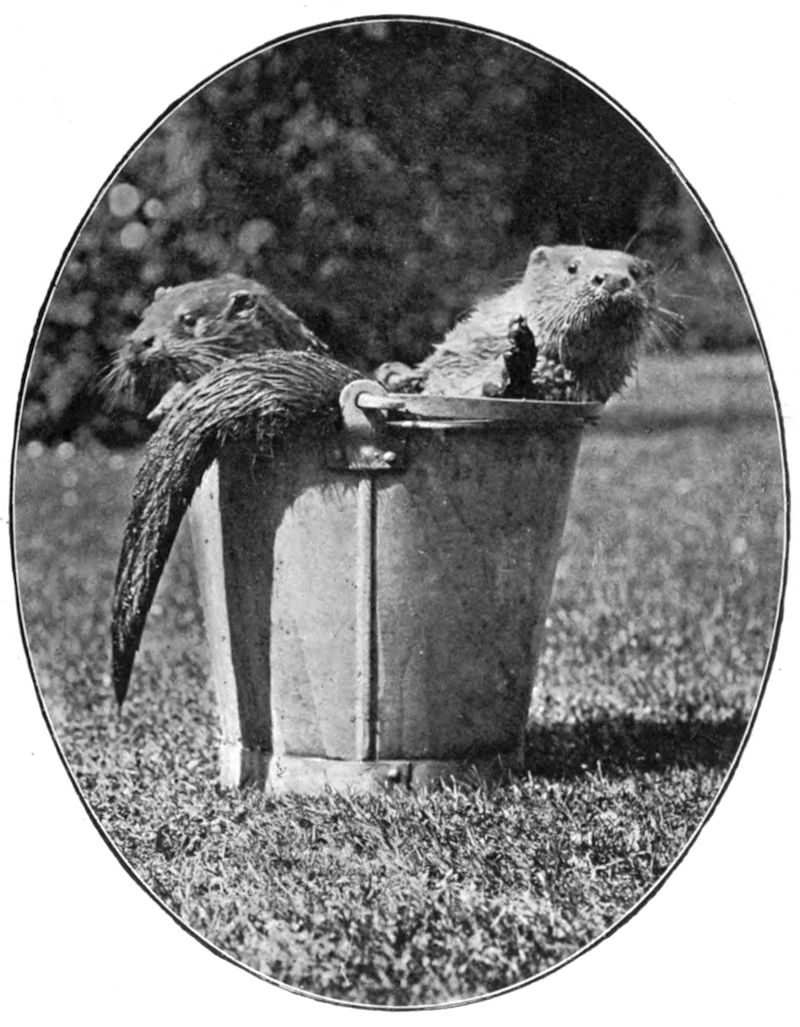
THE LIFE STORY OF AN OTTER

OTTER CUBS.
Reproduced by kind permission of Her Grace the Duchess of Bedford.
Frontispiece.
THE LIFE STORY OF
AN OTTER
BY J. C. TREGARTHEN
AUTHOR OF ‘WILD LIFE AT THE LAND’S END’ AND
‘THE LIFE STORY OF A FOX’
WITH ILLUSTRATIONS
LONDON
JOHN MURRAY, ALBEMARLE STREET, W.
1909
TO
MY WIFE
PREFACE
The otter has long seemed to me worthy ofserious attention, if only for the successfulstruggle it has waged against those exterminatingagencies under which the badger, the wildcat,the polecat and the marten have all butsuccumbed.
Its survival throughout Great Britain is due,partly to its endurance and resources whenhunted, partly to qualities and habits whichdifferentiate it from the other creatures of thewild. Its scent, for instance, unlike that of foxor badger, to which every tike and lurcher willstoop, is noticed by few dogs save hounds thathave been trained to own it; and the outlawedbeast thus gains a certain immunity from destruction.
Then the otter is a great wanderer, who notonly traverses long stretches of coast and followsstreams and rivers to their source, but crosseshills and even mountains to reach its fishing-grounds.It has been known to travel fifteenmiles in a night, and not infrequently the holtswhere it lies up during the day are ten or twelvemiles apart.
On the way to its quarters it will linger tofish or hunt, and the remains of eel, salmon,pike, rabbit, moorhen or wild-duck mark thescene of the midnight feast. But no matterhow much it may leave uneaten the otter neverreturns to a kill, and so escapes the traps withwhich gamekeeper or water-bailiff is sure to ringthe ground about it. Unlike its congener thepolecat, the otter does not hoard food; unless thecaches of frogs occasionally found in marshesare its work, and not that of the heron as isgenerally supposed.
However that may be it is certain that it doesnot hibernate, but is abroad night after nightthe whole year round. Indeed, as often as not,the female produces her young in the depth ofwinter, and indefatigable forager though she is,must often be sore pressed to provide food forher litter. At times the conditions are toosevere, and a tragedy ensues. At Mullyon, inMount’s Bay, one